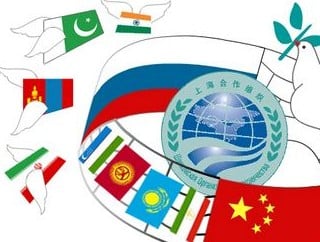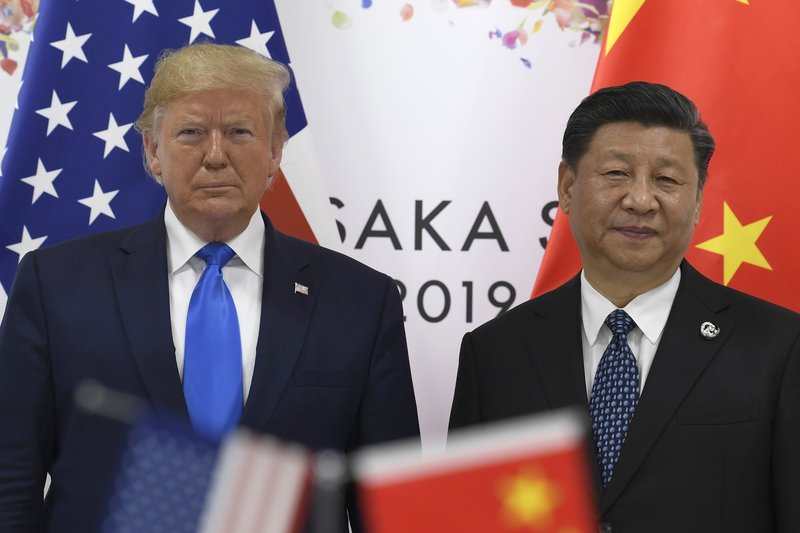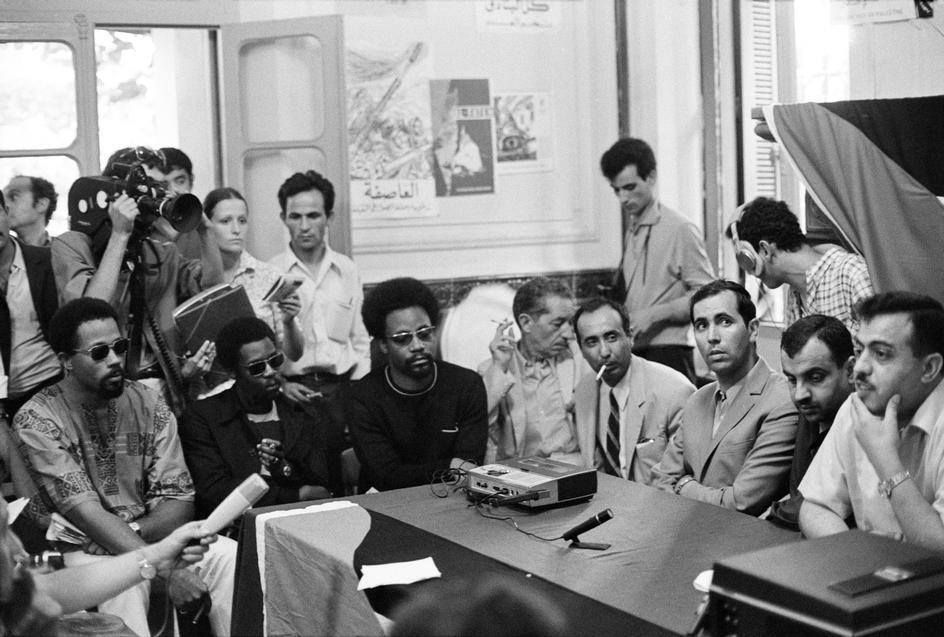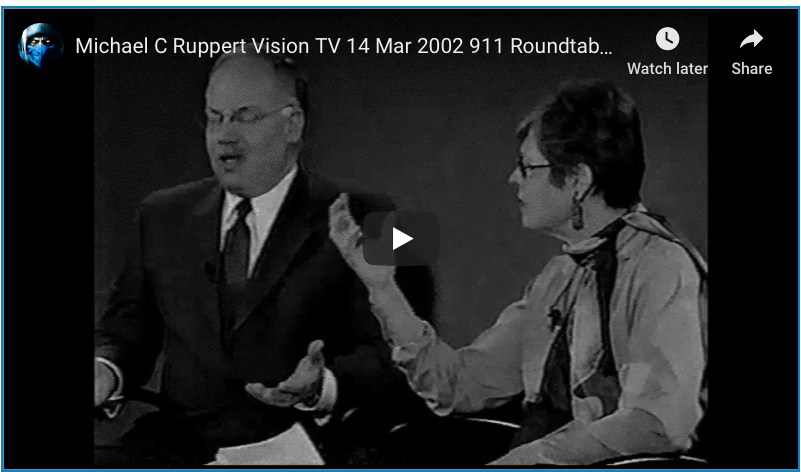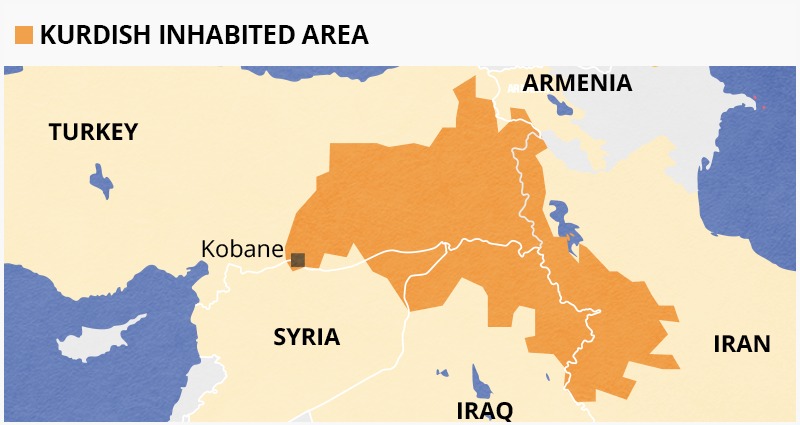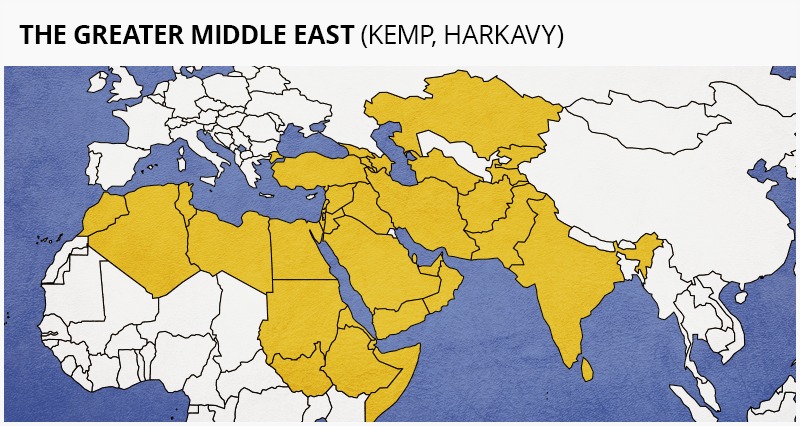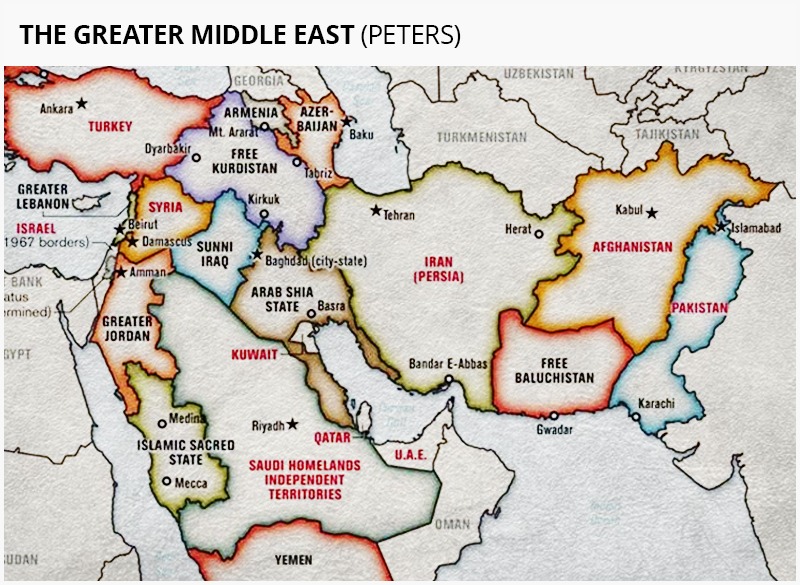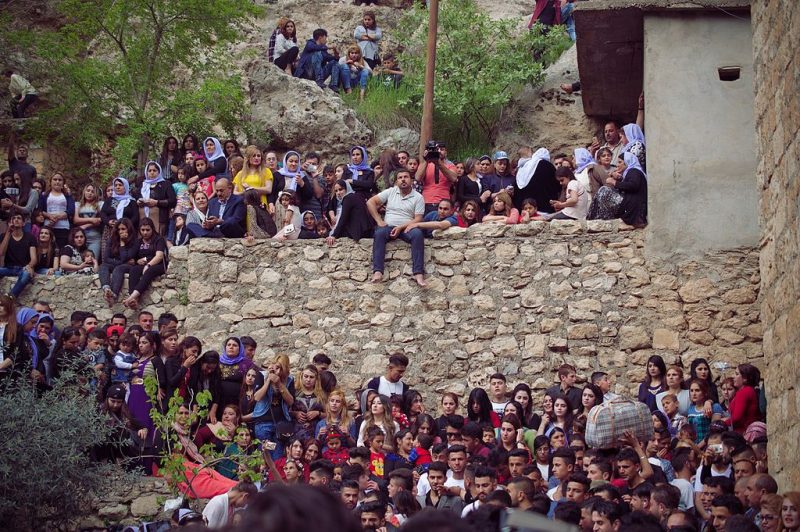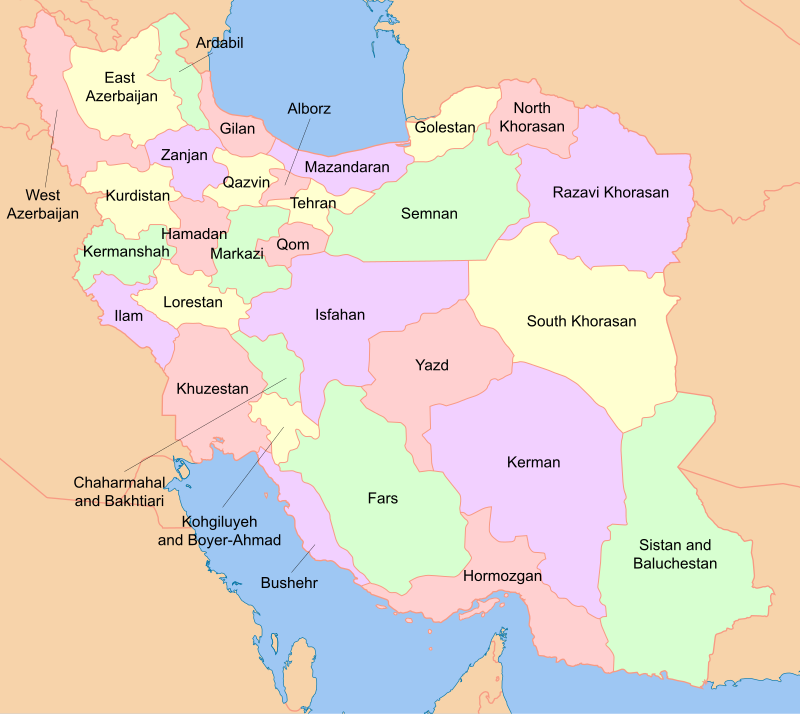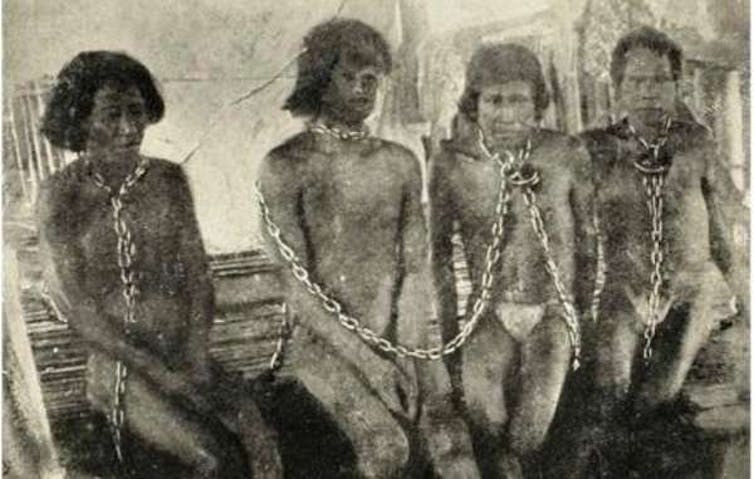The following is an interview conducted by email with a filmmaker based in Donetsk, who has been documenting Ukraine’s war on the Donetsk People’s Republic and the tragedies this has caused civilians living there.
‘Maxim Fadeev’ is actually the pseudonym of a correspondent whose family lives in an area of Ukraine controlled by the government. To protect his family, Maxim, like many journalists whose families live on the other side, opted to use a pseudonym, due to persecution by the Ukrainian authorities.
In fact, even journalists living and working in such areas openly and transparently are persecuted. One prime example is that of Kirill Vyshinsky, editor of RIA Novosti Ukraine, arrested and imprisoned by Ukraine in May 2018, the authorities alleging treason. Vyshinky has 15 months later still not had an actual trial.
UPDATE: As of August 28, Kirill Vyshinsky has finally been released, although he still has not had a fair trial. Sadly, his case is not unique; journalists in Ukraine have very real fears of being persecuted, as do their lawyers. Maxim Fadeev and his family would be a prime target, given the nature of his courageous and damning documentary work.
More on Maxim, as told to me by his colleague:
“Max Fadeev is one of the most prominent filmmakers who has captured the war in the east of Ukraine: his unique footage from the fighting in the midst of the battles was shown on both Russian State TV channels as well as US-funded Radio Free Europe/Radio Liberty. Very few in the industry have dared plunge so deeply into unfolding events. At one stage, he was living with the rebels (militia fighters) for several days during a bloody assault on the terminal building at Donetsk airport, the enemy, the Ukrainian military, being stationed only a hundred meters away. Max daringly filmed an offensive operation from within the Marinka settlement, which is located close to the city of Donetsk. The footage was used by a dozen clip makers – almost every video about Donbass contains his footage (the most famous example has almost 3 million views on YouTube: https://youtu.be/NyCD3LqfbJ8).
Max Fadeev has shot 16 films since May 2014 (https://vimeo.com/maxfadeev), and now, despite the fact that this war is almost forgotten, he and his team independently continue to work on serious documentary projects to show and document what is happening on his native land.”
In order to continue his vital work, Maxim is fundraising. Details can be found at this tweet.
***
Eva Bartlett: How and why did you get into making war documentaries? Did you study journalism? Is this a career for you or are you motivated by other reasons?
Max Fadeev: “They say that the truth is the first victim of any war. Heavy artillery was pounding my city, the inhabitants were dying, and no one cared, either in Ukraine, or moreover in the West. I thought at that time that when people learned from the news that war was raging here, the war would stop. I had such naive hopes. That was the reason I began filming the shelling.
What was horrifying was not so much the artillery attacks as the reaction of my relatives and acquaintances living in Kiev and other Ukrainian cities. They genuinely believed that the separatists were shelling themselves. They still believe it, in spite of the fact that a division of Ukrainian heavy artillery (152-mm) – 11 self-propelled Msta-S howitzers and 3 self-propelled Akatsiyahowitzers – was deployed three km from my house. There were several such heavy artillery units nearby at the time.
The civilians killed in Slavyansk are erased from life and from memory by the Ukrainian government. There are no records of casualties in Slavyansk, nor in Nikolayevka, nor Kramatorsk. No first or last names of the killed and wounded can be unearthed.
“Uragans” —multi-missile rocket launchers, with cluster bomb units—werefiring, and no one was registering it, neither the OSCE nor Western journalists. They had all left by that time.
Electricity and water supplies were cut off in Slavyansk for more than a month, and no humanitarian corridors for civilians were provided, while all media broadcasted a distorted image – that of a city captured by terrorists and being liberated by Ukrainian army. I wanted to prove that the real picture was quite different.
It was never about career for me – more like moral obligation. Now my aim is to learn to professionally make documentaries.”
EB: Describe the situation around you on the first day you began filming.
MF: “At first, I was hired as a live-streamer. I moved around on a bicycle with a tablet and broadcasted everything happening.
On my very first day at the front line, I came under fire by all kinds of weapons deployed by the Ukrainian Armed Forces (UAF) at Slavyansk: first I was sniped at, then we came under 82-mm mortar fire, after that – under D-30 howitzer fire, and finally an armoured personnel carrier targeted our position with tracers. I felt as if I was in the middle of a war movie.
A swift sequence of actions unfolded: our reconnaissance team left for the enemy’s rear, enemy artillery pounded our positions and the buildings around, we ran towards a building already ablaze and came under artillery fire. A wounded girl was screaming, a young boy, militiaman, was trying to help her using a torch, and mortar guns targeted the torch light. I attempted to film it all…
The wave of fear overwhelmed me only when I was already in the safe zone: I felt giddy and dizzy. There was a live fire road there, scary – I rode my bike along it, alone, and in order to get to the front line one had to cross a deserted area, where punctured burnt cars were scattered, and the rider either moved forward in silence or listening to the sounds of distant fire. The uncertainty was unnerving.”
EB: What important events or battles have you covered over the years?
MF: “After the Crimean referendum, and beginning in March 2014, Ukraine started to amass armed forces in Donbass, deploying heavy armaments and artillery.
The illegitimate government of Ukraine declared anti-terrorist operation (ATO) in the Donetsk, Lugansk and Kharkov regions, although the protests in the east of Ukraine were mirroring the events in Kiev and western regions several months earlier…
What would have been the reaction of Kiev residents if units of heavy artillery appeared around the capital in the time of manifestations on Maidan? Perhaps, it would have been similar to that of Donbass people. When tanks were brought here, civilians threw themselves under their tracks, crowds tried to stop the tanks with bare hands. This was happening in March and April.
On May 2, people were burnt alive in Odessa in the House of Trade Unions, and on the same day in Slavyansk for the first time the Ukrainian military started to fire at the people, who blocked their way.
In my opinion, those operations were pre-scheduled: the act of intimidation by burning alive pro-Russian activists in Odessa and the escalation in Slavyansk.
On that day, units of Ukrainian army and National Guard started attacking the city from different directions. There were also air raids. Before that, commandos from central and eastern Ukraine had attempted to enter the city, but they were unwilling to shoot at their compatriots, who blocked the entrances to the city. Eventually, some of the units of the 25th airborne brigade joined the People’s Militia, and the rest of the units left the city and returned to their barracks.
On May 2, the 95th air assault brigade from Zhytomyr (western Ukraine) attacked the city, started firing at people. Civilian casualties in Slavyansk were already forgotten, because the Odessa story dominated the news. No one mentioned Slavyansk, although the first death of a civilian – nurse Yuliya Izotova – occurred there at the time. Militiamen were killed at the roadblocks, when UAF opened large caliber machine-gun fire at them. If before those events journalists could work on both sides of the conflict, after May 2 it became impossible for most Russian and local journalists. The war had started.
After the Crimean events, the Ukrainian army took under its control all the airports in eastern Ukraine. They were controlled mostly by commandos and the units of the 25th airborne brigade. Kiev suspected that Russia could use air force to bring in its armed forces. The Ukrainian army got surrounded, or half-way surrounded, in the airport on the north-west outskirts of Donetsk. Ukrainian propaganda made a symbol out of the besieged airport.
The fiercest fighting occurred at the Donetsk airport, and it went on for a long time. The militia unit that I was filming in Slavyansk fought at the airport, thus, I had access to the frontline positions and was able to film the storming. I knew that the airport would be stormed by the People’s Militia sooner or later, and the storming must be recorded, so, I established good relationship with the commanders in advance.
I arrived in Donetsk when the fighting for the airport was in full swing. I filmed all the stages of the fighting, beginning with in November 2014, the capture of the old terminal, the storming of the new terminal, the attempt of the Ukrainian side to unblock (break the siege on) the airport.
Later I filmed a breakthrough attempt at Maryinka. In Maryinka, the unit was in for a storm, and it was my first attempt at filming attacking troops. There, we were in a vulnerable position in the open, and I was concentrating more on staying alive than on filming. The attack was abortive, the attacking forces had to retreat, having suffered heavy losses.
I reported the events in Slavyansk – the beginning of the hot phase of the war. What was happening in Slavyansk was that the rebels sat tight in one place, and Ukrainian artillery of all kinds of caliber, tanks and aircraft pounded the city and the surrounding settlements. Strelkov’s group from the Crimea entered the city, 52 men. The very first day, about 300 locals joined them, including some of my friends. They made a decision to fight with a machine gun in their hands, and I – with a camera, showing the real state of things that Ukrainian media were silent about.
In Slavyansk we were always under artillery fire, and I had no chance to film machine-gun fire. I shot the first clashes with the use of machine-guns at the Donetsk airport. The clashes took place inside the buildings, so, in most cases the militiamen were protected from artillery fire by concrete walls.
I filmed the suffering of the civilians and also reported from positions in Semyonovka. This locality in the outskirts of the city was connecting the besieged rebels with the outer world, it was their lifeline, in fact.
The hostilities mainly took place there. They cannot even be called true hostilities – they were the raids of sabotage, reconnaissance groups and ambushes. The militiamen also downed military aircraft and choppers attacking both civilian quarters and their positions. The city is situated in a valley and is surrounded by hills. One of the hills was under militia control, and the other three hills were occupied by Ukrainian artillery, which pounded what they called “Russian terrorist forces”. I filmed the impacts upon my school, people being rescued from under the rubble, and I myself helped to evacuate the wounded.
As far as the significance of those events is concerned: Slavyansk is the city in which armed confrontation started, the full-scale war began. Before that, there were separate incidents of activists assassinations. The conflict already was grave. Maidan protestors captured military arsenals, prosecutors’ offices, police stations, and regional administrations offices in the West of Ukraine. At first, the wave of such attacks rolled along Western Ukraine, then the unrest reached Kharkov and Donetsk, where the overwhelming majority of the population was pro-Russian and did not approve of the Maidan coup.
Roadblocks were erected around the city, controlled by local inhabitants whose main task was to not to let the Ukrainian army inside the city.”
EB: Have you been injured in the course of your work?
MF: “Yes, I was wounded twice. The first injury I received while filming in the Donetsk airport, some of the shrapnel is still inside my body. I got the second injury when I was filming training exercises at a firing ground. Generally, the more time spent on the front line, the higher is the risk of getting wounded. One has to follow safety rules, but you cannot foresee every circumstance, and no one can guarantee your security in the course of hostilities.”
EB: What are some of the more difficult (emotionally) moments of your work over the years?
MF: “The most difficult moments must be those in Slavyansk. The Ukrainian heavy artillery division was three kilometers from my home. Its fire went over our heads, pounding the city. The pictures and the clock on the walls were shaking not because of the impacts, but because of outgoing fire.
However, one day, the firing shifted and they started targeting our block of apartments. We had no water for a month by then, and the people living in our block were taking water from one of the water-towers. Once I went there for water and saw that everything around me was destroyed by artillery fire. I saw the rubble, the torn wires. It was a warm summer evening, and everything was quiet, too quiet. I was more than forty years old, and I never experienced such dead silence inside the city. There was always normal urban noise: car sounds, humans talking… And at that moment the city was deadly quiet. I could only hear cats wailing and the sounds of distant gun fire. I was pumping water and thinking that a shell explosion can target me any minute. It was scary.
While our side was not equipped with enough artillery to resist, the UAF relentlessly shelled our towns in order to intimidate the population. That shelling was senseless from the military point of view. It did not exterminate the armed rebels or their fortifications.
In Semyonovka, they did not eliminate the rebel positions, but they wiped from the face of the earth the entire settlement. A heavy artillery division needs only half an hour to destroy several sectors of private housing.
In the course of a month at the start of the war, I was subjected to120-mm artillery fire, then 122-mm, 82-mm. When they started pounding the suburb of high-rise buildings with 152-mm shells, it was very frightening. The explosion shockwave can knock you off your feet. You hear a powerful sound reverberated by the neighbouring buildings, an echo, when a shell hits a house. The 20-mm shells are a crock of shit, but the 152-mm ones… The powder clouds, the dust, the moaning of the wounded…
I knew nothing back then about first aid measures, and several times I was the first to reach the impact site, where I found injured people, and I could do nothing to help them, I was just running in circles like an idiot and shouting: “Please, someone, call an ambulance!”
It was not easy to face frightened women, children, relatives of the deceased. There were two typical reactions to the impacts: people either used strong swear words, or, mostly women did it, lowered their voices to a whisper.
At times my colleagues asked me why I filmed people cursing. I did it because everyone curses after they are hit by artillery strikes. When people started to whisper, it was slightly like insanity. I don’t know how to describe the feeling. You are walking along the street, looking at broken out windows, and the inhabitants come out in slippers, and a man asks you in whisper: “Do you know what you should do to prevent windows breaking out? Open them as for airing.” People start to converse in whispers.
…One woman was crying over the body of her killed husband lying on the kitchen floor, and most of all she worried if she could find a way to bury him.
It was scary to watch the reaction of the children…
Too many militiamen, whom I filmed, were killed in action in the course of these five years that the war has been going on. My father died and three of my close relatives died, and I was not able to attend their funerals or visit their graves. I haven’t seen my mom for four years now. And no one knows, when this all will end.”
EB: Have you ever filmed or witnessed war crimes by the Ukrainian army?
MF: “I think that during the first phase of the war, from May till August of 2014, the Ukrainian Army committed many war crimes. The unreasonable heavy shelling—including with multiple rocket launchers with cluster bomb units—of densely populated areas. They fired at civilian infrastructure.
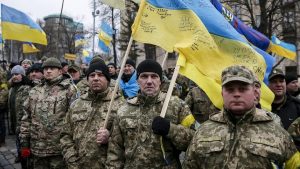
In the course of a month, the UAF never hit rebel fortifications in Semyonovka. But the pumping station of the Severskiy Donets – Donbass water channel that provided the entire region with water, was destroyed by the UAF twice in June of 2014. The people, who were engaged in repairing of the pipeline, were killed as a result of the shelling. The station was intentionally destroyed, in my opinion.
As a journalist, I always tried to investigate from which positions firing occurred, and what objects were targeted. Even if their aim was, say, a roadblock in a private housing section, they fired on an area of about a square kilometer, destroying everything.
I saw in August of 2015, although it was not possible to record, a tank coming to the belt road of Donetsk each evening and firing all its ammunition load in the direction of the city. It chose maximum range and fired absolutely indiscriminately. I was able to film the results of the shelling, but I could not get closer than a kilometer from the tank. I saw perfectly well the location of this tank and I saw the impact sites.
I tried to do the same in Slavyansk. Many people still say: ‘The shelling was carried out by the rebels.’ It was not so, I did investigate, I came as close to the enemy’s positions as possible, and then, with the help of the witnesses testimonies, Ukrainian reports in free access and satellite images, I found out where such and such batteries were located and what objects they targeted.
They blatantly violated international humanitarian law, violated a rules of warfare rules. Even the Geneva Conventions of 1945 was violated. Article 51 reads: “Neither civilian population as such nor civilian persons shell be the object of attack.”
Even the UN registered that at the moment there was no Russian presence in Donbass. It was an inner civil conflict, and our side did not even have grenade launchers, they only had shot guns. And when the UAF brought artillery here, armaments captured from Ukrainian forces were the initial weapons of the DPR army.
The problem with this conflict is that it is very complex, multilevel, and there are many participants. It is not easily explained to people who have little interest in the events in the post-Soviet space.
There was a country that was called the USSR, and it was inhabited by all kinds of Soviet people, who all accepted a certain social convention – it was accepted at the time when this country was created. Those people agreed to live in this country.
Ukraine was established, and its inhabitants were sure that they all were building the same country. They cohabited in it.
Later, as a result of application of various kinds of political technologies – at first the “Orange Revolution” of 2014, and then EuroMaidan of 2014 – the integrated population was divided into two conflicting groups. A new nation was created artificially – a nation of “nationally conscious Ukrainians”, the main idea of which was to reject everything relevant to Russia and Russian ethnicity. The intentions and hopes of one part of the population differed greatly from those of the other part.
Then, that part of the nation, which was fixated upon Europe and wanted to integrate into the EU, decided that it was able to impose their fixation upon the rest of the population. They suggested that we should forget our history, our ancestors, our language, our ethnicity. They took away my right, and the right of the like-minded people, to consider myself a Russian.
They called me Ukrainian, although I am not Ukrainian. My mother is Ukrainian, and my father was Russian. It is my right to choose my ethnicity. In the Soviet Union I was able to decide, who I was – a Russian, a Ukrainian or a Greek. We were free to identify ourselves. In Ukraine we were stripped of this right.
Ukraine is a country of wide ethnic diversity. It was artificially created out of fragments of two empires: Austro-Hungarian and Russian. If you look at the map, you will see an industrial belt in the southeast of Ukraine. And if we compare this map to the map of languages, we will see, that Donbass has always been populated by Russian-speaking people, identifying themselves as Russians, and it was they who built the industrial belt of Ukraine, which is closely connected with Russia by production chains. This is not just an ethnic conflict, but also a conflict of lifestyle patterns: urban industrial and rural agricultural.
After 2014 the rhetoric of hate started to dominate. MPs on talk shows spoke about the people of lower quality, who lived here in Donetsk. They said our region was populated by children of prostitutes, drug addicts, and criminals.
Then the so-called ‘Revolution of Dignity’ took place, when the oligarchs, and sponsored by them, nationalist groups became the weapon of the collective West.
It should be clear that there are the creators of the game, there are players, and there are chess pieces. The creators of the game known as ‘Ukraine is not Russia’” are in the USA. The EU and NATO are the players, and Ukrainian oligarchs are chess pieces. The nationalists are mere pawns.
There are active players and passive players. Russia was a passive player. During all those years it was just watching. A new type of war was launched, which created a new political nation in Ukraine. The real aim of Maidan was not European integration, but reformatting of the people’s consciousness and war, repressions against those, who opposed the reformatting. The Maidanites did everything in order to ignite the war and create chaos on the border with Russia.
There are many reasons, why people joined the battle. Some people understood the consequences of the course, declared on Maidan and then adopted by its leaders who seized the power. Many people warned about the outcomes of the coup, which Ukraine faces now, five years later: economic collapse, devaluation of the national currency, civil war. Such people did not accept the coup, the fact that decisions were made without their participation. They tried to stop the process. And their counterparts decided to beat them into obedience.
What a part of the population calls ‘The Revolution of Dignity’, the other part calls a coup d’état.
Part of the nation ousted the legitimately-elected President and declared itself the new authorities.
The technology of such revolutions includes complete annihilation of the state foundations. Western instructors themselves explain it to Maidan activists: that they have to destroy the so-called ‘support base’. If there is a nation, there are vertical structures that support the state. They (Western agents) detect those structures, and use swarming technologies against them, creating the appearance that the nation liberates itself from the authorities, whereas it undermines the foundations of the state.
Lots of people saw it and tried to oppose it. Blood was spilled. Maidan activists killed and humiliated the riot police of the Berkut unit [riot police who carried no firearms; they were attacked with Molotov cocktails, bricks and guns]. Some of those police were from the eastern regions.
Ukraine was inhabited by peaceful people mainly, it seemed that civil war was impossible here, the idea itself seemed absurd. In order for the people to start killing each other, the society had to undergo certain stages of transformation. This is the standard theory of crises. Maidan was a technology of bringing the people to war. At each stage, while it was still possible to stop the hostilities, everything was done in order for the conflict to be exacerbated. And then the moment came, when the military started to fire at their own people.
The people of Donbass attempted to oppose this process. Nevertheless, it came that they had been manipulated, too. The people here mirrored everything that their opponents did, but the cynical West that earlier lamented the ‘youths beaten by police‘ (students in Maidan), turned the blind eye to the young children killed by Ukrainian artillery fire in Slavyansk.
There are too many questions to be asked about the activity of various international structures, including the OSCE. They ignored the shelling of Slavyansk, but they registered the killing of a man, allegedly, by rebels, in a basement in Lugansk, although their observers weren’t present.
They allegedly had a rule: ‘We register only what we witness‘. But they mentioned the data of Ukrainian casualty reports it their own reports, in third parties’ words, without being present at the sites.
When Ukrainians carried out an air strike on the Lugansk Regional Administration on June 2, as a result of which eight people died and 28 were injured, the OSCE did not notice it. They also failed to notice a month-long shelling of Slavyansk.
In fact, there would have been no hostilities, if the Ukrainian army had never come here and started killing everyone. I think that the post-Maidan Ukrainian government wanted a war, and they’ve got it.”
EB: Have you filmed outside of the DPR?
MF: “The peculiarity of this conflict is that the journalists working on the rebel side are viewed by Ukraine as terrorists, along with the combatants. Some of the journalists who entered the territory under rebels’ control and tried to report objectively were later arrested in Ukraine. That was why after May 2, 2014, practically no local or Russian journalists attempted to cross the demarcation line. Only Western agencies (and until the middle of 2015, even certain Ukrainian TV channels) could film the events on both sides of the front line. This is one of the factors exacerbating the conflict: the absence of information available on both sides of the front line.
The only instance, when I got to the other side, was before the start of Debaltsevo operation. When the Ukrainian army was preparing to storm Slavyansk and Lisichansk, and also before Ukrainian troops entered Debaltsevo, the civilian population did not receive any warning, there was no evacuation, and no humanitarian corridors were provided.
On the contrary, when the storming of Debaltsevo by the DPR army was about to start, a convoy of buses entered the city, accompanied by the OSCE observers. Its aim was to evacuate the civilians. The Ukrainian side was trying to hinder the evacuation. Ukrainian agents attempted to dissuade the people from leaving for the DPR territory. By chance I met a crazy taxi driver, a former militiaman, who suggested that he would take me to Debaltsevo, having stealthily joined the OSCE convoy.
I attempted to interview members of the Ukrainian military. I was shocked by the fact that they were also human. At that moment, the Ukrainian flag was equal in my perception to the flag of Nazi Germany. After everything I witnessed in Slavyansk, Uglegorsk, Donetsk, after filming so many deaths and so much destruction, I saw enemies in Ukrainian soldiers, and the realization of their human nature made things even worse for me. It was hard to believe that ordinary men could do such horrible things. It was terrifying to be there without any identity card, because the place swarmed with Ukrainian secret services agents. What helped was the presence of many Ukrainian journalists, and we did not differ from them in appearance.
The dwellers of Debaltsevo refused to talk to me, thinking that I represented Ukrainian media, which they totally distrusted. I whispered to them that I was from Donetsk, that I was on their side, but they did not believe me. However, when they did start to speak, I worried for their safety, and for mine as well, because Ukrainian military were everywhere around us, and the locals cursed them and blamed them for the shelling of Debaltsevo. That was one of the scariest moments.”
EB: What equipment would improve the quality of your documentaries and also your safety in filming?
MF: “Before the war, I wanted to learn how to film travel videos. I had one SLR camera, a set of lenses, sound recording equipment – a minimal set. The camera was destroyed at the airport, when I filmed the explosion of a RPG grenade. In 2015, my viewers bought me Canon 6D and some equipment by crowdfunding. Nevertheless, after several years of work in Donbass this equipment got outdated and worn. My colleague Sergey Belous turned for help to one of Moscow businessmen, and the man bought a new camera for me and an excellent lens.
Eventually Sergey and I decided to found Realdoc Productions and work as a team, and gradually with the help of crowdfunding we managed to obtain the minimal set of equipment. Now we are the only ones filming the war in Donbass in 4K.
Today we need a powerful computer that allows to edit videos and post process them in 4K, a professional monitor for color correction as well as a drone for more secure filming. This is the minimal list of equipment.
We also need information support for our crowdfunding. We will also be grateful for translation of our documentaries and vids into foreign languages and sharing them to various web resources. If a person of the same occupation – a producer, videographer or editor – reads this interview and is able to give professional advice, he or she is welcome! We would like to reach the stage when we could receive independent financing.”
EB: What’s the situation like now in the Donbass? How does it compare to previous years?
MF: “We are in the twilight zone, it’s like interregnum. The stupid war will not end. The people are suffering, they are leaving, they are too tired. Militiamen, mostly very young boys, are dying in action every day. The infrastructure is being destroyed constantly.
Donbass has no choice, no possibility of stepping back. Although Ukraine won’t lose anything if it stops fighting, Donbass will lose everything. It is the issue of survival for us, and for Ukraine it is just about grabbing the land. In one of his recent interviews, the Ukrainian Minister of Social Policy openly called the retired people of Donbass “scum”.
It is very difficult to explain war to those, who had never seen it. And it is still more difficult to explain, what is going on in Donbass now. The people in big cities are attempting to live their ordinary peaceful lives, and in the areas close to the front line, subjected to shelling, life is slowly dying out.”
EB: Have any Western media contacted you regarding your war footage and documentaries?
MF: “Only once, and it was an extremely negative experience for me. It resulted in the picture that distorted reality. I risked my life, filming a tank of DPR army that moved forward in order to storm the new terminal of the airport. In their documentary it looked as if a Ukrainian tank is breaking through to the new terminal.
Or, in another instance they totally distorted an absolutely neutral reportage. The interviewed man says: ‘Young people react in different ways, the situation is complicated now. Many of them leave, many enroll in the army.’ They leave only a part of the phrase: ‘the situation is complicated now. Many of them leave.’ The part ‘many enroll in the army’ was simply cut out.”
EB: Are you working on any projects now?
MF: “For me, the key projects are “The demarcation line” and “I am Donbass”. “The demarcation line” tells about the tragic situation in the front-line settlements, in the so-called “grey zone”, where civilians are trying to survive between a rock and a hard place. It is also about the militiamen, who secure the objectives.
“I am Donbass” is about the people of our region, about the way they overcome the hardships of the blockade and unrecognized status, how they keep on with their lives, about their thoughts and dreams. I want to show their faces, let them express their hopes, and it is especially important to do, when Kiev is spawning propaganda to dehumanize these people.”
*
Note to readers: please click the share buttons above or below. Forward this article to your email lists. Crosspost on your blog site, internet forums. etc.
This article was originally published on Eva Bartlett’s blog site, In Gaza.
Eva Bartlett is an independent writer and rights activist with extensive experience in Syria and in the Gaza Strip, where she lived a cumulative three years (from late 2008 to early 2013).

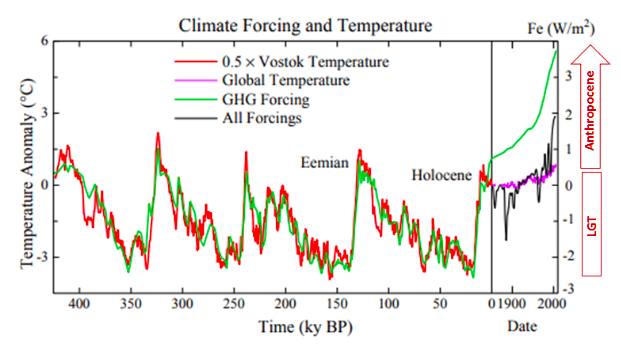
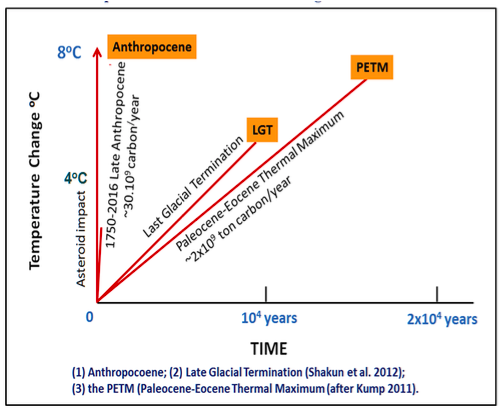
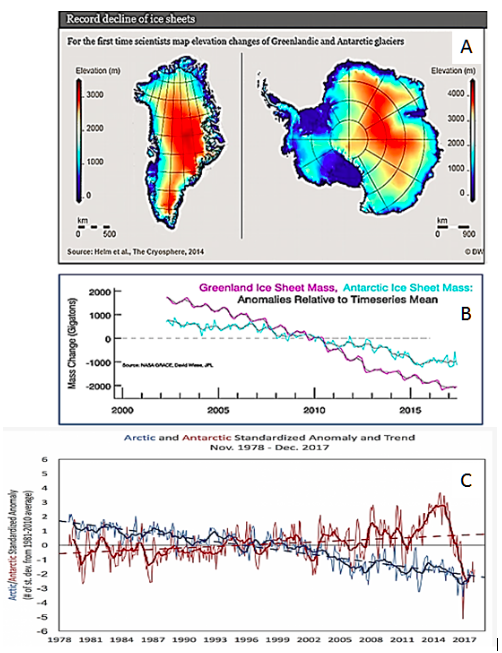
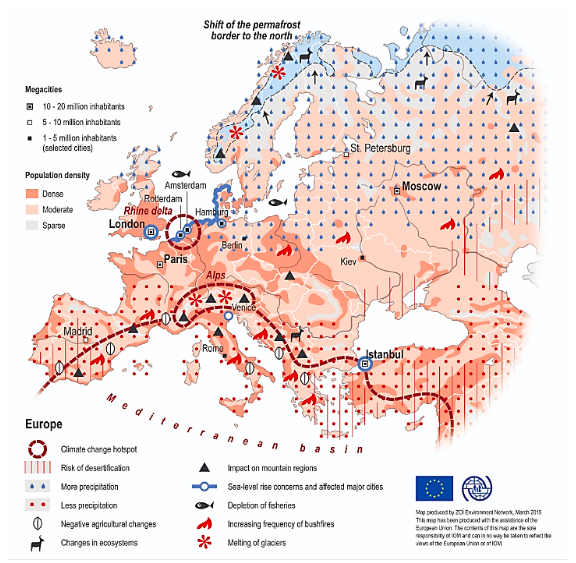

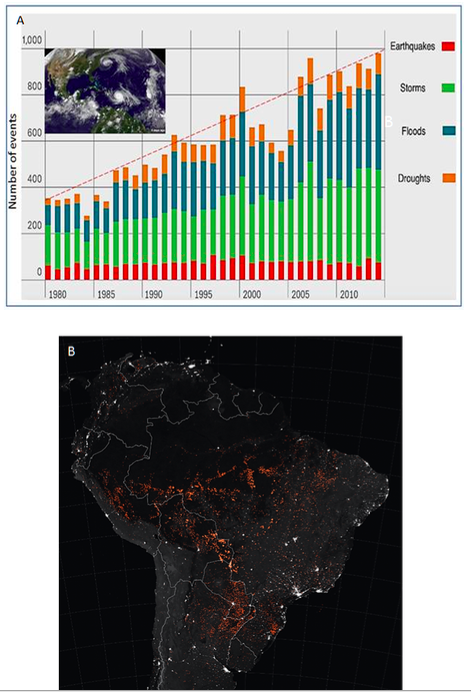
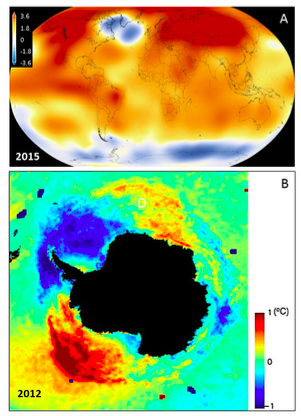

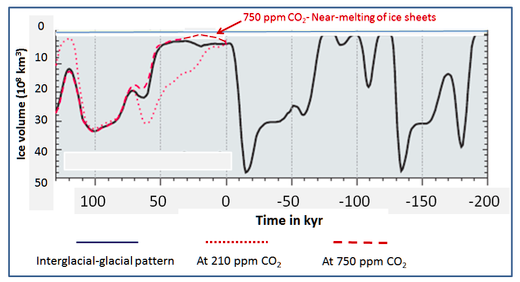
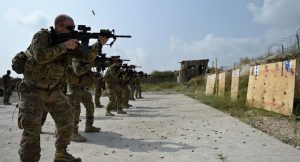
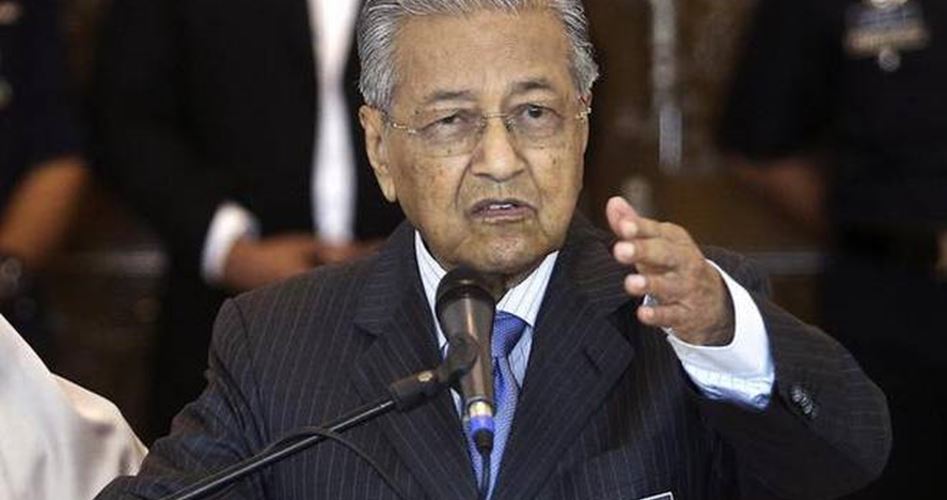
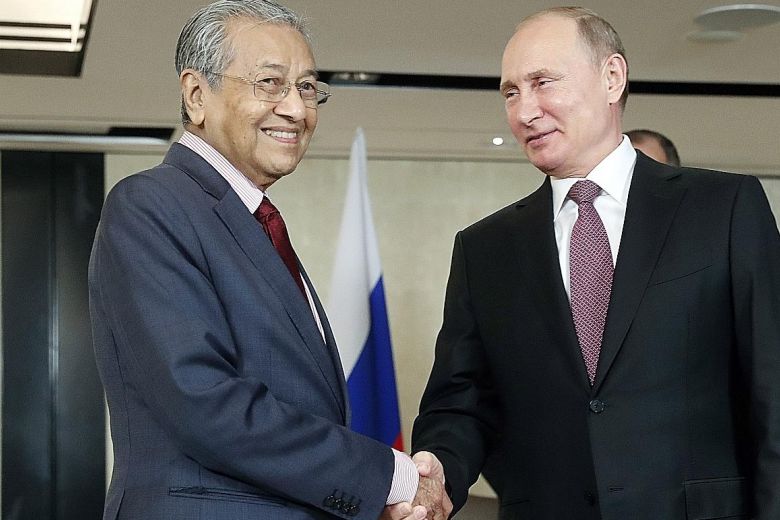
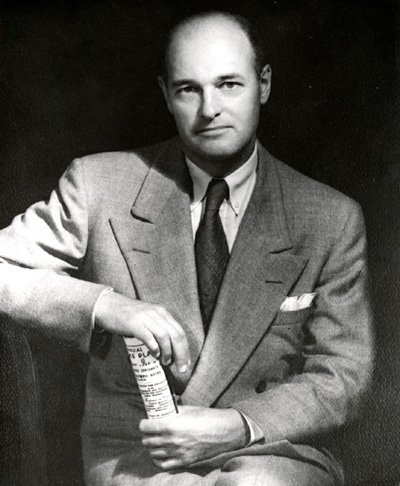 China is situated in a strategically vital area of east Asia – with Russia lying northwards, resource-laden central Asia to the west, Korea and Japan to the east. China is also a state rich in valuable deposits like coal, natural gas, aluminium and magnesium. Western business had flourished in China during the years before World War II, much to the detriment of the Japanese.
China is situated in a strategically vital area of east Asia – with Russia lying northwards, resource-laden central Asia to the west, Korea and Japan to the east. China is also a state rich in valuable deposits like coal, natural gas, aluminium and magnesium. Western business had flourished in China during the years before World War II, much to the detriment of the Japanese.